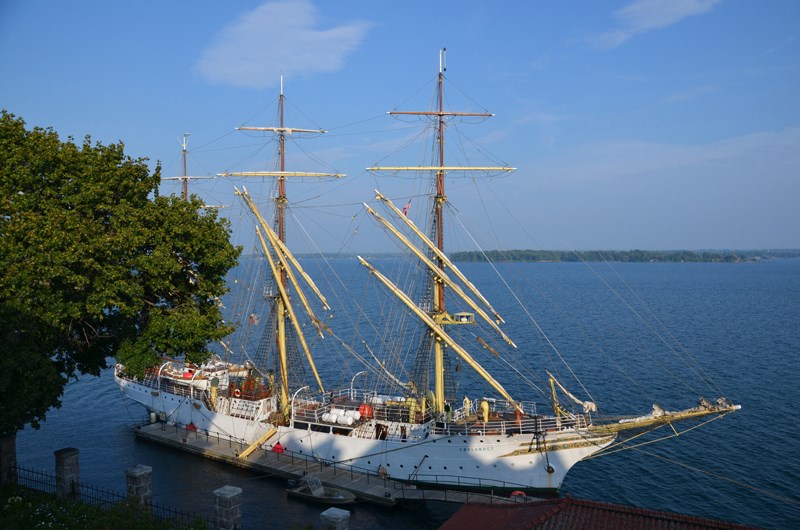
It’s been five months since Kim Wallace set sail on the tall ship Sorlandet, and she’s only just starting to get her confidence back.
The Jasperite works for Class Afloat, where she is in the middle of a nine-month teaching stint that takes place on a boat and across the world.
Forty students, along with a crew and staff of teachers, sail the Atlantic Ocean for a school year, stopping in 23 ports along the way. Their traditional high school curriculum is augmented with lessons about sustainability, experience sailing, and cultural exchanges in the countries where they stop.
On Jan. 26, Wallace was in Cartagena, Colombia, talking on Skype from a small grocery store that happened to have internet access.
“It’s been such an experience for me to let go of control and be in a completely different world than what I’m used to,” she said.
Trained in wilderness First Aid, and backcountry guiding, Wallace is used to people coming to her “as a leader.” But, she said, “being on the ship, I don’t know anything about anything.
“Teaching is the only thing that I’m confident in right now.”
But even teaching transforms wildly when it’s done on the deck of an 86-year-old Norwegian tall ship.
Wallace explained that the classes are taught in the same common area where the students eat, sleep and live. The “classrooms” are just spaces sectioned off from one another by hanging curtains, and everyone can hear what’s going on in every other lesson.
Every day that they’re not docked at a port is a school day, and when they are crossing from one continent to the next that means as many as 23 days in a row of classes.
“We don’t have a lot of free time; it’s pretty full on,” she said.
“Twenty-three days of school is,” Wallace paused briefly, “hell,” she said with a laugh, adding that during their last crossing the teachers organized a “snow day,” filling the ship with paper snowflakes and canceling classes.
And that, Wallace said, is what a lot of living on a boat is: finding ways to stay sane and dealing with an environment that’s like an intensified version of the outside world.
She explained that something as tiny as the small herb garden she and her students have started growing in a Tupperware container can bring an intense “sense of calm,” and create new connections—even among a small group of people who spend most of their time crammed together on a boat.
“What I really recognize the most about living on a ship is how it’s a microcosm of our larger world—except we see the effects of things more instantly,” she said.
Just as her life is constrained by the ship, in many ways it has become defined by the ship. Wallace refers to the Sorlandet not as “it,” but as “her.” She said that sometimes when she’s in a port she will look to the water and see the ship’s three tall masts lit up against the sky.
“It’s an incredible experience to look at her and just be proud,” Wallace said. “That’s my home, that’s where I live, and that’s who’s taken care of me and who’s brought me across the sea and that’s where I’m experiencing my life right now.
“It’s a really, really cool feeling to just look at her and just see how beautiful she is.”
Trevor Nichols
[email protected]
